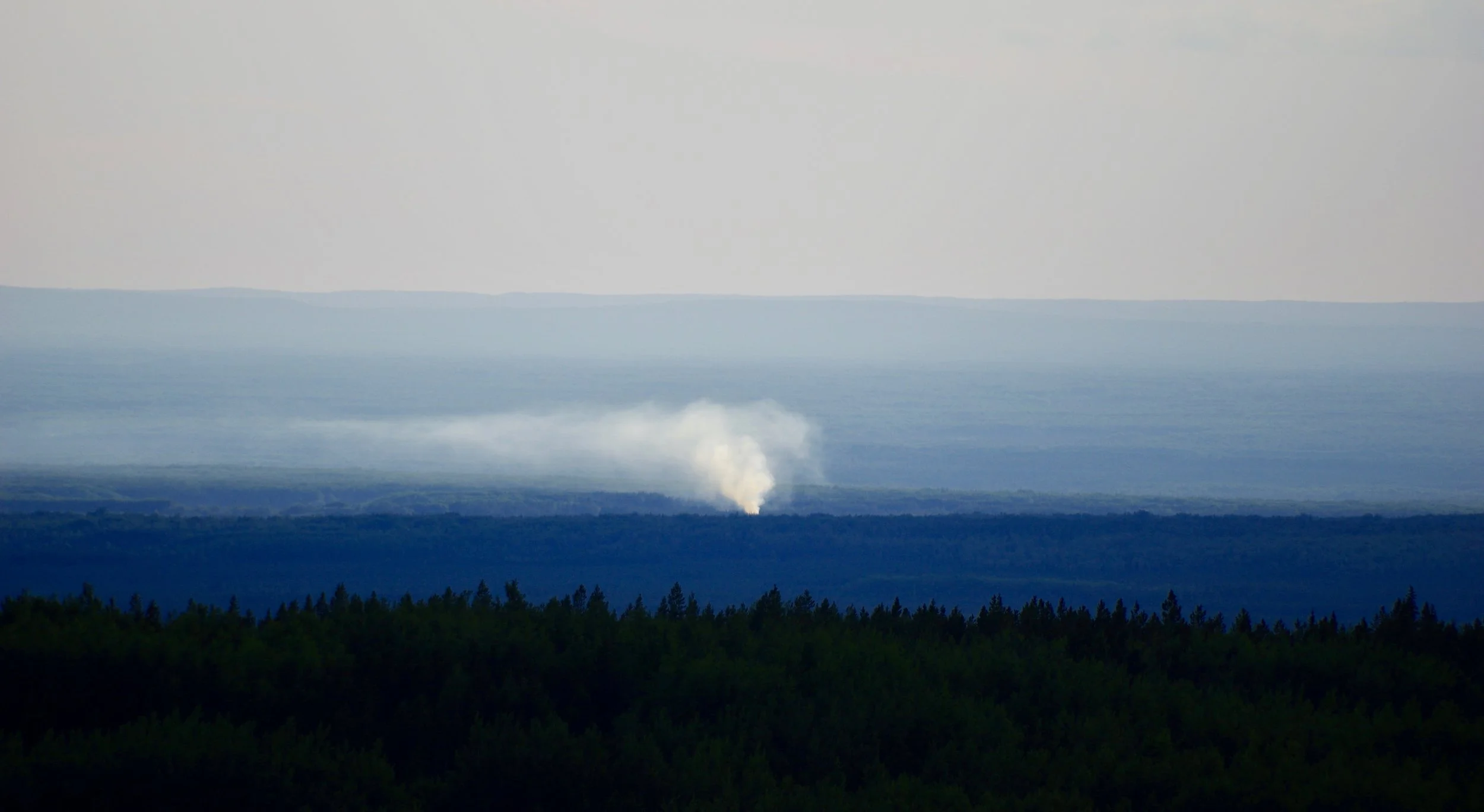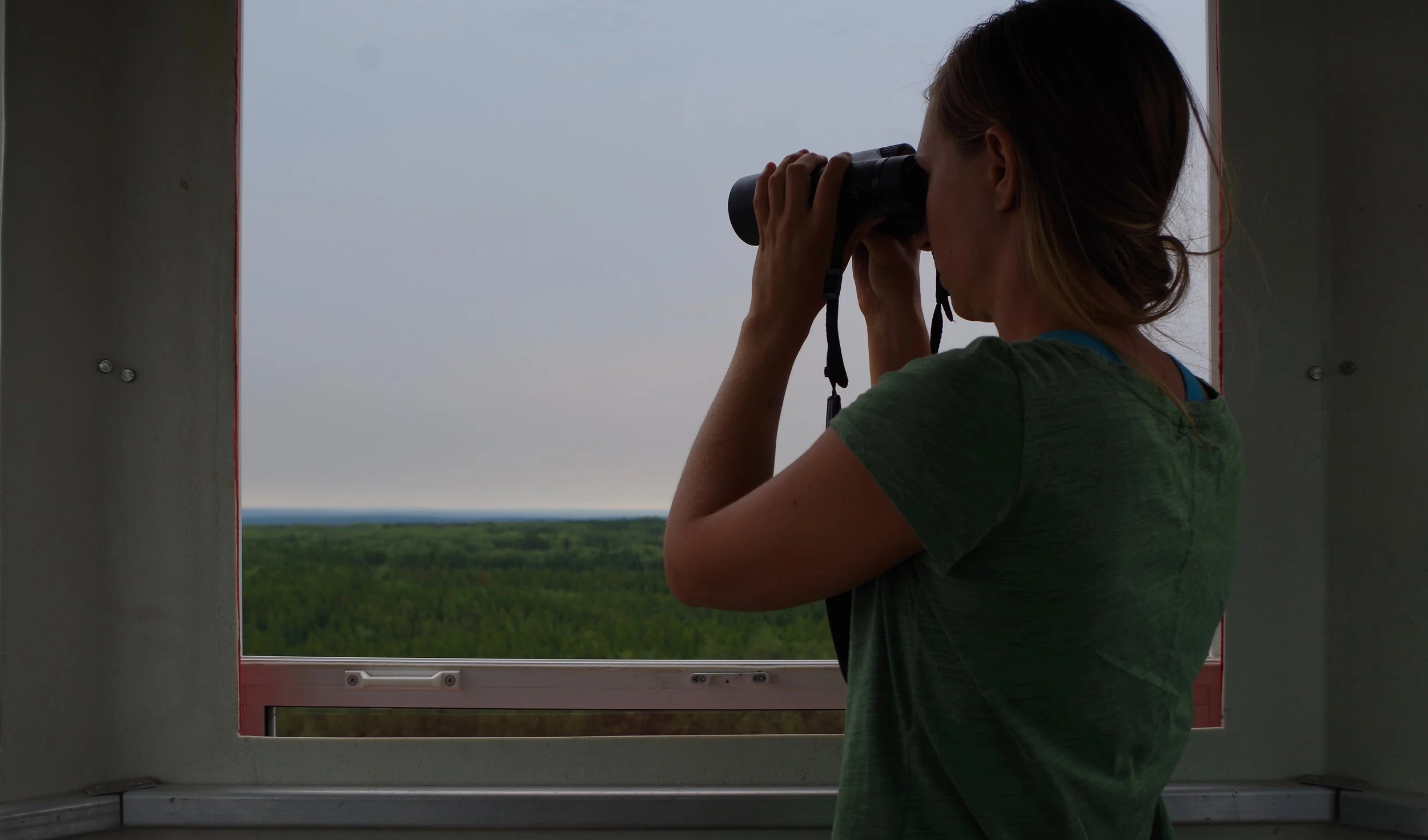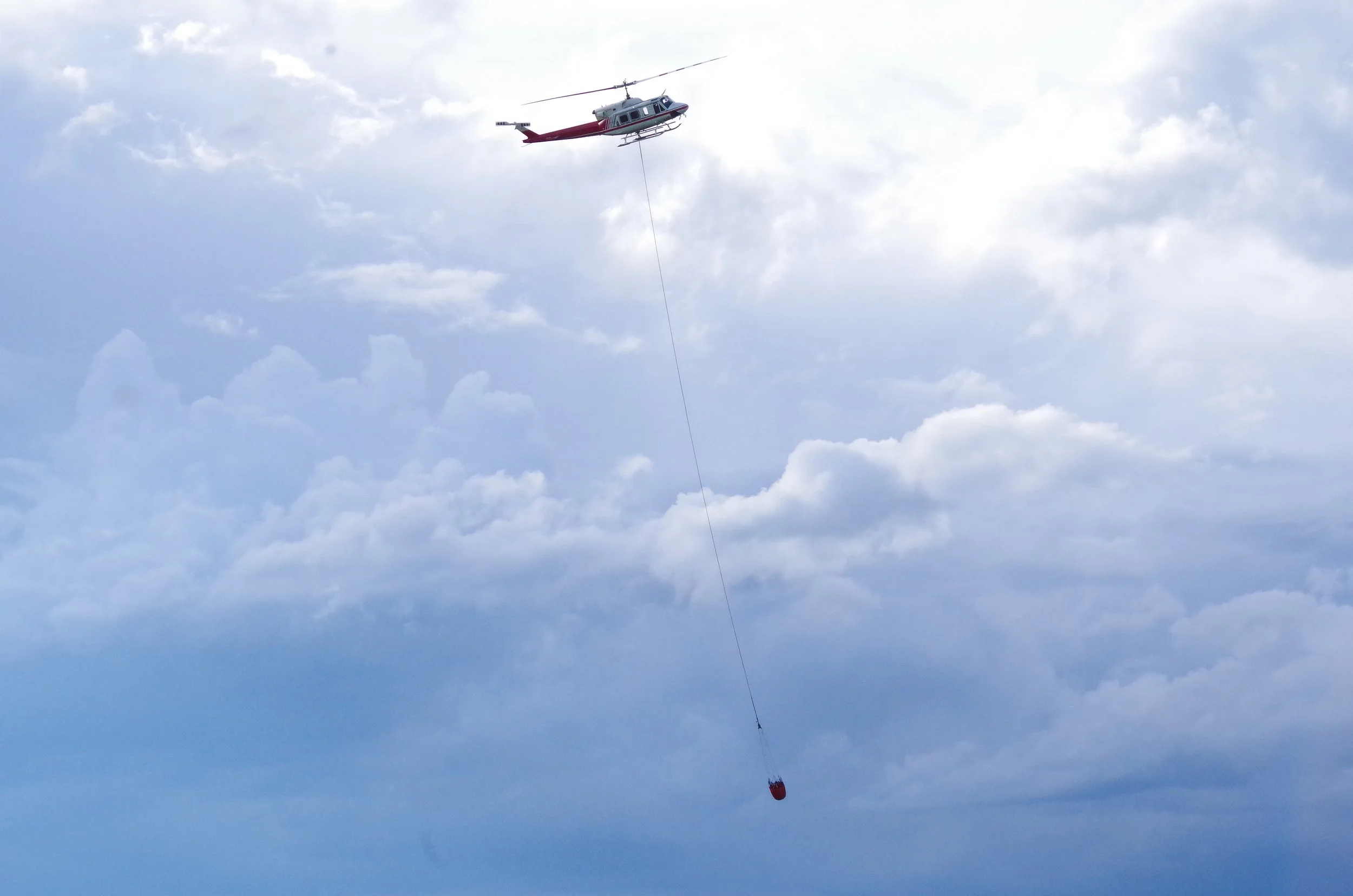In Defence of Early Detection
PUBLISHED OP-ED IN THE GLOBE AND MAIL—AND A VISIT TO THE NORTHERNMOST FIRE TOWER IN CANADA
Lookouts strive to report fires when they’re still small—ideally 0.01 hectares in size—and can be managed by Initial Attack crews, faster, and requiring fewer resources.
In June, the Globe and Mail commissioned me to write a story about the role of lookouts in early wildfire detection in Canada. I’ve obviously written quite a bit about my personal experiences at the fire tower (oh yeah, that book I wrote), but I wanted this story to take a deeper, more critical dive into the history of lookouts in Canada and reasons behind why different provinces have decommissioned them over the years. It’s certainly not as straight forward as the rhetoric that’s been regurgitated in the media over the years, referring to fire towers as “ineffective” or antiquated.
Alberta was “modernizing” wildfire detection, Devin Dreeshen, Minister of Forestry and Agriculture, told the public in 2020 after closing 26 towers. ‘Modernizing’, according to the Minister, meant relying on “cameras and aerial patrols”. But this wasn’t anything new.
For years, I had a fixed camera mounted atop my tower and, to my knowledge, it had never detected a wildfire before the lookout. Managers used them for visibility updates, for the most part. Aerial patrols, or “loaded patrols”, were also already in use. Most crews dreaded them. They’d rather wait for a detection from a lookout, or a 310-call, than burn fuel flying over the forest, with the exception of chasing fires after big lightning storms, or on those smoky days when lookouts couldn’t see farther than five, or ten kilometres.
Anyway, I wanted to better understand what was at play in the politics of decomissioning towers, so I reached out to Tim Klein, a retired detection coordinator in Alberta.
TIM IS, LIKE, THE GODFATHER OF ALBERTA’S LOOKOUT PROGRAM. HE WORKED ON TOWERS FOR 12 YEARS AND LATER HELPED TO SHAPE THE PROGRAM INTO WHAT IT IS TODAY (OR, WHAT REMAINS OF IT, ANYWAY). TIM TRAINED MANY OF US OVER THE YEARS.
He helped me fill in the gaps of the lesser-told story about why lookouts closed down. Turns out, it’s often had more to do with funding and safety issues than the effectiveness of detection.
Historically, many provinces built lookout systems in the early to mid 1900s that became costly to maintain. Ontario and Quebec built around 300 to 400 fire towers. B.C. had around 320. Over the decades, upkeep was slim and many towers deteriorated. Alberta was “lucky” in that sense that they maxed out at 145 towers, Tim said. The program was less costly to maintain.
Catch ‘em small, the old lookout adage goes. A self-portrait from my first season at Keg Lookout.
Many of B.C.’s fire tower were in such ill repair they were deemed unsafe by worker’s safety boards; the province began to decommission them in the 70s and 80s. Today, somewhat ironically, the B.C. government is investing in their repair for, not detection purposes, but recreation and tourism. Instead, the province relies heavily on the public to report wildfires and patrols by fixed-wing aircraft. They have a pretty nifty citizen app that allows the public to upload GPS points and photos of wildfires, but there is the issue of access: the majority of B.C.’s fires are lightning-caused, often igniting in remote locations. Just how quickly are wildfires being detected in the province?
THAT’S A DIFFICULT THING TO MEASURE, AS IT TURNS OUT. THERE ISN’T much for DATA THAT’S AVAILABLE TO THE PUBLIC ABOUT HOW INDIVIDUAL WILDFIRES ARE DETECTED, AT WHAT SIZE, AND THE TIME-LAG BETWEEN DETECTION AND CREWS ARRIVING TO ACTION THEM.
When we read articles about wildfires in the news no one ever talks about who spotted the fire. Detection just isn’t quite as sexy as an image of an air tanker dropping a ten-thousand-dollar load of crimson coloured retardant on the open flames, I guess.
But minutes absolutely matter, experts say.
If you’re curious to read more, check out my op-ed, Up in Smoke — Staffed Lookouts Aren’t Relics from the Past, published in the Globe and Mail on July 13, 2024.
I was recently interviewed by CBC Radio Day 6 host, Amil Niazi, about the article, and the segment aired on July 27, 2024. A disclaimer to say that the interview was recorded before the tragic events occurred in Jasper, Alberta.
A medium helicopter slinging a water bucket, while actioning a small lightning-caused wildfire.
TWO WEEKS AGO, I had the pleasure of flying from Whitehorse to Dawson City, Yukon, to visit the northernmost fire tower in Canada, on assignment for North of Ordinary Magazine.
What can I say? It was a bit of a dream-come-true for this gal to climb a 70-foot tower again and look out from the cupola—and incredibly special to spend 3 days getting to know the lookout, Markus Lenzin, his wife, Elfie, and their adorably cheeky tower dog, Tilda.
Markus picked me up from Dawson’s small airport and as we got in his Subaru, he glanced over and told me: “I feel like I know you already.” We agreed that spending so many years at the lookout is, indeed, a bonding experience. Markus has spent the last 18-years catching smokes and 13 seasons at Dawson Lookout, only a 15-minute drive from town.
Although, I know it makes him uncomfortable to hear it, Markus is a bit of a legend in Dawson. Most local Dawsonites are aware that Markus is keeping vigilant for wildfires. Once, he called a homeowner to report a black smoke on their property—it turned out, their sauna was on fire! I spent a morning at the Dawson Fire Base and drank coffee with manager, Bryan, and a veteran crew leader, Guy, and they told me other stories, like the time Markus caught a fire 200 km to the north, so far it turned out to be in Alaska. Guy joked that Markus has such an eagle eye he’d catch the “butt end of my cigarette smoke”.
Markus humbly shrugs off these stories (“folklore”, he says) and credits, instead, the strong sense of teamwork in Dawson and the Yukon Territory, at wide. There are 5 active fire towers remaining in the Yukon and they continue to play an essential role in early detection.
For me, what was unique about this particular story is that it was a mutual learning opportunity. As I was interviewing Markus, he was simultaneously interviewing me about my own experiences as a former lookout in Alberta. Being in Dawson made me fall in love with the fire tower all over again.
When Markus and Elfie dropped me off at the airport, I felt as though I was saying farewell to the dearest of friends. Safe to say, it won’t be my last visit to Dawson Lookout.
Markus, a talented photographer, also captured my portrait up in the cupola.
“You look like a lookout,” he said warmly.
Thank you to Markus and Elfie for their warm hospitality and the amazing staff at Yukon Wildfire Management for allowing to access to tell this unique community story.
Stay tuned for my feature for North of Ordinary Magazine about Markus’s story and the importance of fire tower lookouts in the ‘Land of the Midnight Sun’, due out later this fall.
Lookout interviews the Lookout. (photo by Markus Lenzin).







